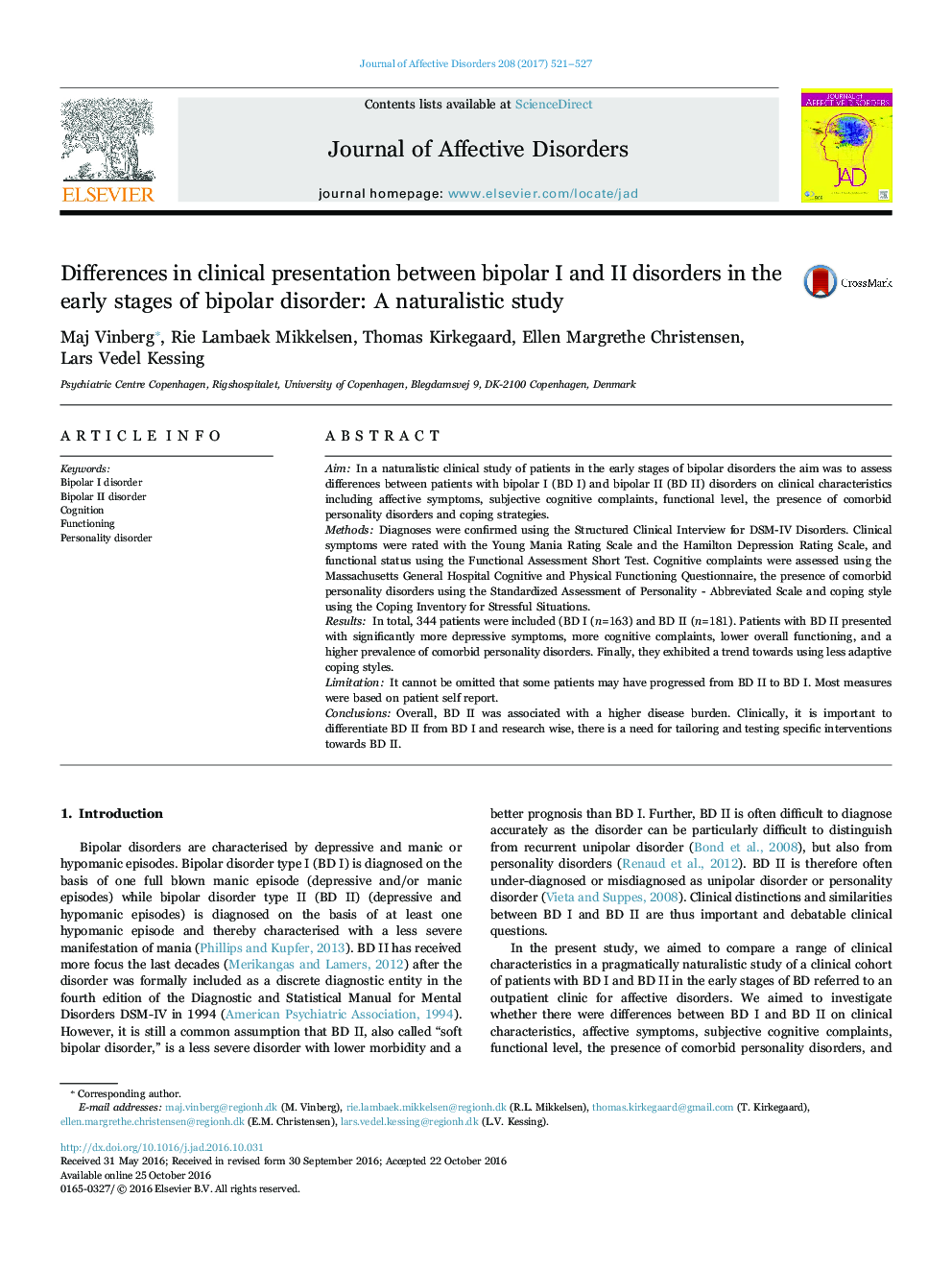| Article ID | Journal | Published Year | Pages | File Type |
|---|---|---|---|---|
| 5722122 | Journal of Affective Disorders | 2017 | 7 Pages |
â¢More depressive symptoms.â¢More cognitive complaints.â¢Lower overall functioning.â¢A higher prevalence of comorbid personality disorders.
AimIn a naturalistic clinical study of patients in the early stages of bipolar disorders the aim was to assess differences between patients with bipolar I (BD I) and bipolar II (BD II) disorders on clinical characteristics including affective symptoms, subjective cognitive complaints, functional level, the presence of comorbid personality disorders and coping strategies.MethodsDiagnoses were confirmed using the Structured Clinical Interview for DSM-IV Disorders. Clinical symptoms were rated with the Young Mania Rating Scale and the Hamilton Depression Rating Scale, and functional status using the Functional Assessment Short Test. Cognitive complaints were assessed using the Massachusetts General Hospital Cognitive and Physical Functioning Questionnaire, the presence of comorbid personality disorders using the Standardized Assessment of Personality - Abbreviated Scale and coping style using the Coping Inventory for Stressful Situations.ResultsIn total, 344 patients were included (BD I (n=163) and BD II (n=181). Patients with BD II presented with significantly more depressive symptoms, more cognitive complaints, lower overall functioning, and a higher prevalence of comorbid personality disorders. Finally, they exhibited a trend towards using less adaptive coping styles.LimitationIt cannot be omitted that some patients may have progressed from BD II to BD I. Most measures were based on patient self report.ConclusionsOverall, BD II was associated with a higher disease burden. Clinically, it is important to differentiate BD II from BD I and research wise, there is a need for tailoring and testing specific interventions towards BD II.
